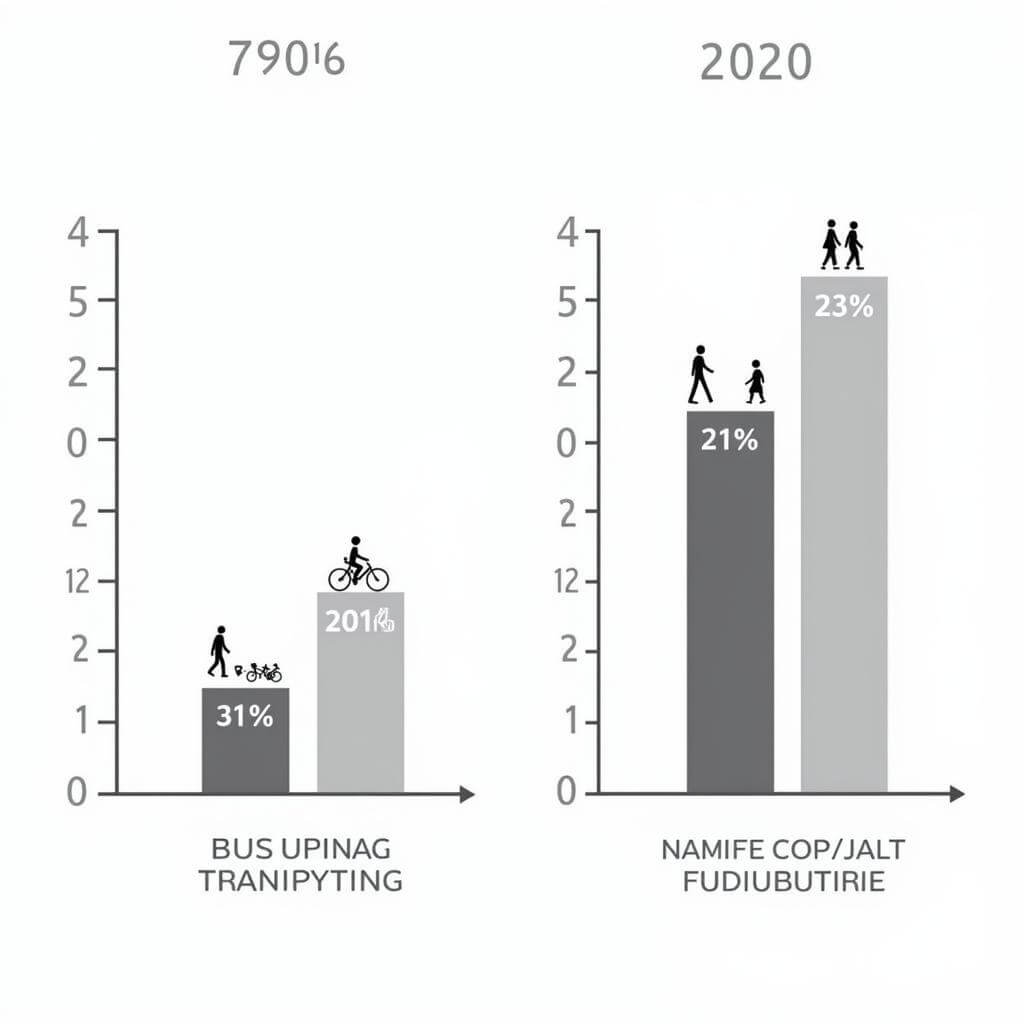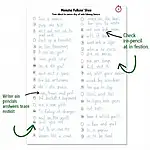IELTS Writing Task 1 often requires candidates to compare and contrast information presented in graphs, charts, or diagrams. Crafting strong comparisons is crucial for achieving a high band score in this section. This article will provide you with expert tips and strategies to enhance your comparison skills and excel in IELTS Writing Task 1.
Understanding the Importance of Comparisons in IELTS Writing Task 1
Comparisons are a fundamental aspect of IELTS Writing Task 1. They demonstrate your ability to analyze data, identify significant trends, and communicate key differences or similarities effectively. Examiners look for clear, accurate, and well-organized comparisons when assessing your response.
 IELTS Writing Task 1 comparison example
IELTS Writing Task 1 comparison example
Key Strategies for Writing Strong Task 1 Comparisons
- Identify the main features
- Use appropriate comparison language
- Group similar items
- Highlight significant differences
- Maintain a balanced approach
1. Identify the Main Features
Before writing, carefully analyze the visual information to identify the most important aspects to compare. Look for:
- Highest and lowest values
- Notable trends or patterns
- Significant changes over time
- Unusual or unexpected data points
Focusing on these key features will help you structure your comparisons effectively and demonstrate your analytical skills.
2. Use Appropriate Comparison Language
Employing a variety of comparison language is essential for writing strong Task 1 comparisons. Here are some useful phrases:
- “Compared to…”
- “In contrast to…”
- “Similarly…”
- “While X, on the other hand…”
- “X is significantly higher/lower than Y”
Dr. Emma Thompson, a renowned IELTS expert, advises: “Using a range of comparison structures not only improves your task achievement score but also enhances your lexical resource band.”
3. Group Similar Items
When dealing with multiple data sets or categories, group similar items together to make your comparisons more coherent and organized. This approach helps you avoid repetition and presents information more efficiently.
For example, if comparing transportation modes in different years, you might group public transport options (buses, trains) and contrast them with private transport (cars, motorcycles).
4. Highlight Significant Differences
While it’s important to note similarities, focusing on significant differences often provides more valuable insights. Pay attention to:
- Large numerical disparities
- Opposing trends
- Unexpected contrasts
Professor James Lee, an IELTS Writing specialist, states: “Identifying and explaining notable differences showcases your analytical skills and can significantly boost your task achievement score.”
using grammar for better cohesion
5. Maintain a Balanced Approach
Ensure your comparisons are balanced and objective. Avoid:
- Overemphasizing minor differences
- Neglecting important similarities
- Making unsupported assumptions or judgments
Strive to present a fair and accurate representation of the data provided.
Advanced Techniques for Stronger Comparisons
To further enhance your IELTS Writing Task 1 comparisons, consider these advanced techniques:
- Use precise language and specific data
- Incorporate relative and absolute comparisons
- Employ linking words and phrases effectively
- Integrate overview statements
Use Precise Language and Specific Data
Instead of vague statements, use precise language and include specific figures to support your comparisons. For example:
Weak: “Car usage was higher than bus usage in both years.”
Strong: “Car usage was significantly higher than bus usage, with 45% compared to 25% in 2000, and 50% compared to 20% in 2020.”
how to avoid unnecessary details in IELTS writing task 1
Incorporate Relative and Absolute Comparisons
Combine both relative (percentage) and absolute (numerical) comparisons to provide a comprehensive analysis. This approach demonstrates a deeper understanding of the data and its implications.
Example: “While the proportion of cyclists increased by 10 percentage points from 2000 to 2020, the absolute number of cyclists more than doubled, from 5,000 to 12,000.”
Employ Linking Words and Phrases Effectively
Use a variety of linking words and phrases to connect your comparisons and improve the overall coherence of your response. Some examples include:
- “Furthermore…”
- “Additionally…”
- “However…”
- “Despite this…”
- “As a result…”
improving coherence in IELTS writing
Integrate Overview Statements
Include clear overview statements that summarize the main comparative trends or patterns. These statements help examiners quickly grasp your understanding of the overall picture.
Example: “Overall, while car usage remained the dominant mode of transport in both years, there was a notable shift towards more sustainable options, with significant increases in cycling and walking percentages.”
Common Pitfalls to Avoid in Task 1 Comparisons
To ensure you write strong comparisons, be aware of these common mistakes:
- Overusing basic comparison structures
- Neglecting to compare all relevant data
- Making unsupported generalizations
- Focusing too much on minor details
- Failing to identify overall trends
By avoiding these pitfalls and implementing the strategies discussed earlier, you’ll be well-equipped to write compelling and accurate comparisons in your IELTS Writing Task 1 response.
improving task 1 trend analysis
Conclusion
Writing strong comparisons in IELTS Writing Task 1 is a skill that can significantly improve your overall band score. By implementing the strategies and techniques outlined in this article, you’ll be able to analyze data more effectively, structure your response coherently, and demonstrate your language proficiency to the examiners.
Remember to practice regularly, focusing on a variety of chart types and data sets to hone your comparison skills. With dedication and the right approach, you’ll be well-prepared to tackle any comparison task in IELTS Writing Task 1.
how to structure IELTS writing task 1 reports
FAQ
- How many comparisons should I include in my IELTS Writing Task 1 response?
There’s no fixed number, but aim to cover all significant trends and patterns. Usually, 3-5 well-developed comparisons are sufficient to demonstrate a comprehensive understanding of the data.
- Should I always mention exact figures when making comparisons?
While exact figures can add precision, it’s not always necessary. Use them for key data points, but focus on describing overall trends and significant differences for a balanced response.
- How can I improve my comparison vocabulary for IELTS Writing Task 1?
Practice using a variety of comparison structures and phrases. Study sample answers and note how expert writers express comparisons. Create a personal list of comparison language to reference during your preparation.
- Is it better to organize comparisons by time periods or by categories?
The best approach depends on the data presented. Choose the organization that allows for the clearest and most logical comparisons. Sometimes, a combination of both methods works well.
- How detailed should my comparisons be in IELTS Writing Task 1?
Aim for a balance between detail and overall trends. Provide enough specific information to support your comparisons, but avoid getting bogged down in minor details that don’t contribute to the main patterns or significant differences.


